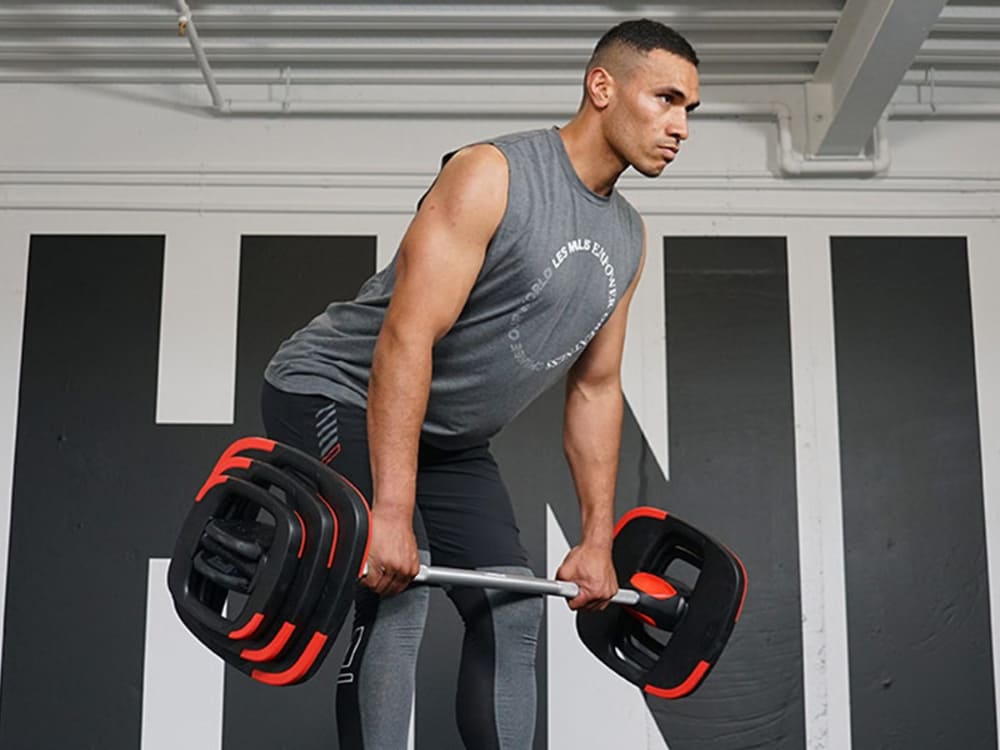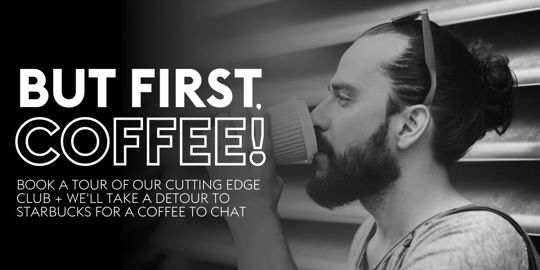We love the power-packed deadlift. Great for strengthening all the muscles down the back of your body, building core strength and improving posture. It can also work wonders for your athletic fitness, build strong lower body muscles and help you move faster during cardio training. Find out how to deadlift below to get closer to achieving each of these.
The muscles you'll work
During the deadlift you build integrated back and leg strength by working all the muscles of the posterior chain in unison. This means that all the muscles down the back of your body are engaged; the Hamstrings, Gluteus Maximus, the Erector Spinae in the lower back, the Thoracic Spine in the middle and upper back and the big Latissimus Dorsi muscles. You also build core strength by engaging the Abdominals and improve posture too.
How to set up the perfect deadlift
- Place your feet directly under your hips
- Keep your knees bent at a 20 degree angle
- Roll your shoulders up, back and down – so that you pick up the chest up and set great posture
- Hold the bar with your hands a thumb distance out from the side of your thighs
- Brace your core to support your lower back.
The movement
- Tip from the hip, sliding the bar down close to your thighs until it reaches the top of the knee
- As you lean forward maintain a long spine and a slight knee bend
- Return to standing tall by driving through your heels and squeezing the glutes
- Keep the chest lifted by pulling shoulder blades together and your elbows back
- Keep your core braced and your eye gaze directed towards the floor.
How it should feel
As you lower the bar you should feel a stretch in the back of your thighs, and as you rise tall you should feel tension in the back of your thighs and your glutes. Throughout the movement you should feel constant postural control through all regions of the back.
How to maximize results
Most of the time your thoracic spine, which is the upper and middle area of your back, is naturally flexed, so to get the best results from your deadlifts you really need to focus on activating the thoracic extensors. You can easily do this by turning your elbows to the rear and making sure they stay pointed this way. With your elbows pointed backwards you contract your scapular retractor muscles and activate all the muscles that extend and stabilize your thoracic spine.
What to watch out for
- Losing neutral neck alignment by gazing forward. This results in hyperextension of your neck and compression of the cervical vertebrae which, when combined with a heavy deadlift load, can result in a neck injury. You can alleviate the risk by keeping your chin tucked in and your eye gaze towards the floor.
- Rounding your upper back with your shoulders forward. This issue doesn’t just arise during deadlifts, a lot of us suffer from this alignment on a day-to-day basis! By focusing on keeping the shoulder blades towards the spine and the chest lifted you will strengthen the key stabilizers of the thoracic region.
- Lowering the bar below the knees. Lowering the bar too low increases the chance of flexing the lumbar spine, and lumbar flexion with a heavy bar increases intervertebral disc stress. It is safest to lower the bar to the top of your knee.
- Bending your knees. While it’s good to set up the move with a slight bend in your knees (about 20 degrees), bending your knees any further during the movement allows you to lower the bar without a hip hinge. This is not ideal as a hip hinge is the best action to engage the muscles of the posterior chain.
- Having the bar away from your thighs. Allowing the bar to move away from your thighs may put too much stress on the spinal extensors, which can result in an inability to maintain a neutral spine.
If you’re keen to practice your deadlift technique you’re sure to get a good dose of deadlifts in a any BODYPUMP or LES MILLS GRIT Strength workout.
This piece originally appeared on lesmills.com. Thanks to the team for sharing their insights!


